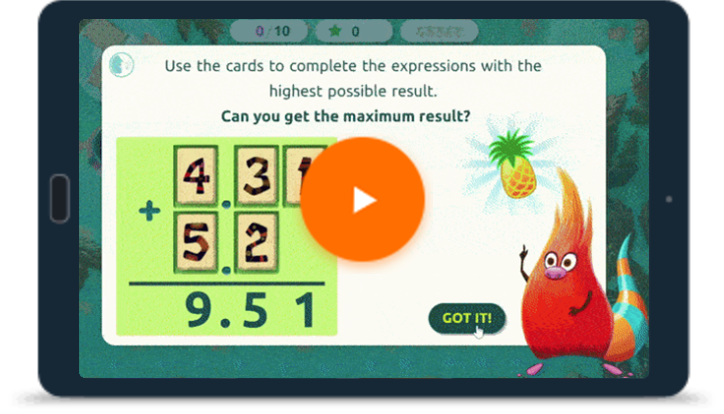
Intrinsic Engagement: Leverage children's mathematical potential and inquiring mind
Children have access to powerful mathematical ideas and an inquiring mind. They are ready to take ownership of their own learning and can solve many of the real-world problems all around them. Children's development advances when they have opportunities to practise newly acquired skills as well as when they experience a challenge just beyond the level of their present mastery.
Lyn D. English, A member of the Matific Academic Board, Professor of Mathematics and STEM Education Queensland University of Technology, discusses ways to leverage children's mathematical potential and inquiring mind as a springboard for even greater mathematical achievements.
Several researchers have highlighted the mathematical capabilities of young learners. If we ignore these then we deny our children the rich learning of which they are capable. Unfortunately, in underestimating what young learners can achieve, educators tend to remain with basic activities that comprise little variation or stimulus in what is to be learned.
One of the biggest challenges is to find ways to use their mathematical talents as a springboard for even greater mathematical development. This is where Matific comes to the fore.
Matific caters for a range of achievement levels and challenges children to achieve higher and higher. The beautiful presentation of problems and activities is highly stimulating—children want to learn more and want to try the next set of rich experiences. There is also important variation in how concepts are presented. For example, in the activity, “Don’t Poke Around”, triangles are positioned in many ways—not in the one standard position, children must distinguish a specific triangle, such as acute-angled triangles, from among many triangle forms presented.
Another example of how Matific develops powerful ideas can be found in the activity, “Play a Big Part.”
Children are not simply completing number operations, rather they have to aim for the highest result by choosing from a set of numbers presented. Such an activity not only consolidates previous work on number computations, rather, it also reinforces children’s understanding of place value. For example, to achieve the highest result in a subtraction computation, children must have an understanding of tens and ones and how subtracting a large number of tens will not produce a high result. The wonderful characters in each activity are highly motivating, as well as challenging, and can assist children in understanding and remembering the target concepts.
